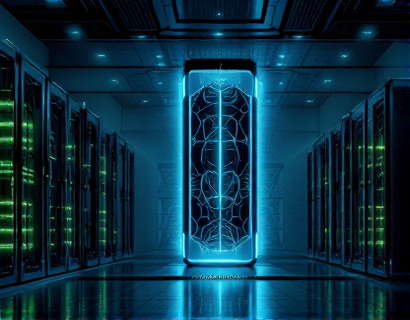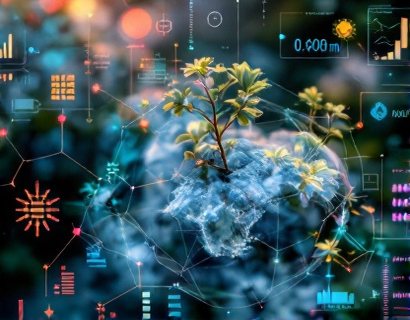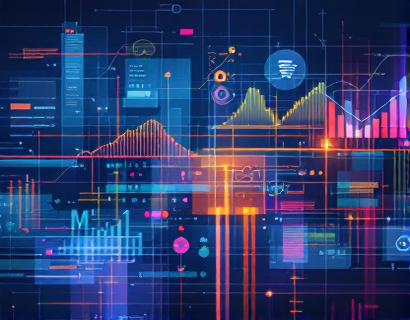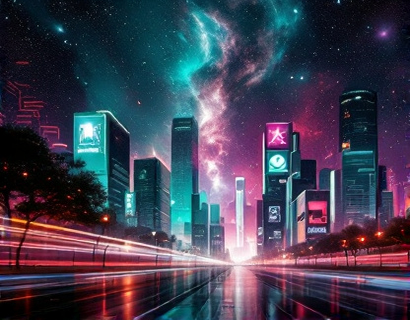Elevate Your Digital Ownership: Innovative NFT Solutions for Creators and Collectors in the Evolving Digital Landscape
The digital age has ushered in a new era of creativity and ownership, particularly with the advent of Non-Fungible Tokens (NFTs). These unique digital assets have revolutionized the way creators and collectors interact, trade, and own digital content. This article delves into the transformative power of NFTs, exploring how they are redefining digital scarcity and ownership, and fostering a vibrant community that pushes the boundaries of digital innovation.
The concept of digital ownership has long been a topic of debate. Unlike physical assets, digital content can be easily replicated and distributed, making it challenging to establish uniqueness and ownership. NFTs address this issue by leveraging blockchain technology to create verifiable and unique digital tokens. Each NFT represents a distinct asset, whether it's a piece of art, a song, a video, or any other digital file. This innovation ensures that digital creations can be owned, traded, and collected, much like physical items.
One of the most significant advantages of NFTs is their ability to establish digital scarcity. In the traditional digital world, copies of files are infinite, and value is often diminished with each duplicate. NFTs change this paradigm by assigning a unique identifier to each token, ensuring that only one person can own a specific digital asset at a time. This scarcity creates value and encourages creators to produce limited editions, exclusive content, and unique experiences.
For creators, NFTs offer a new revenue stream and a way to monetize their digital work. Artists, musicians, writers, and other content creators can tokenize their creations, allowing them to sell directly to fans without intermediaries. This direct connection not only increases their earnings but also strengthens the relationship between creators and their audience. NFTs provide a transparent and secure way to prove ownership and authenticity, reducing the risk of piracy and unauthorized use.
Collectors, on the other hand, find in NFTs a new frontier for building and showcasing their collections. The uniqueness and scarcity of NFTs make them highly desirable, akin to rare collectibles. Collectors can acquire, trade, and display digital assets in virtual galleries or on personal profiles, creating a digital equivalent of a physical collection. The blockchain's immutable ledger ensures that the provenance and history of each NFT are transparent and verifiable, adding to their appeal.
The ecosystem surrounding NFTs is rapidly evolving, with various platforms and tools emerging to support creators and collectors. These platforms provide user-friendly interfaces for minting, buying, selling, and managing NFTs. They often integrate with popular social media and marketplaces, making it easier for users to discover and engage with digital assets. The community aspect is a crucial component, as it fosters collaboration, innovation, and a shared passion for digital creativity.
One of the key features of these platforms is the ability to create and customize NFTs. Creators can use various tools to design and encode their digital assets, adding metadata, images, and even interactive elements. This flexibility allows for a wide range of applications, from digital art and music to virtual real estate and gaming items. The process of minting an NFT involves converting the digital file into a blockchain-based token, which is then stored in a digital wallet. This token can be bought, sold, or traded on NFT marketplaces or directly between users.
The trade aspect of NFTs has given rise to a dynamic and vibrant market. NFT marketplaces serve as the primary venues for buying and selling these unique digital assets. These platforms often feature search filters, price alerts, and auction mechanisms, making it easier for users to find and acquire the NFTs they desire. The market is diverse, with categories ranging from digital art and collectibles to music and gaming items. The transparency of blockchain technology ensures that transactions are secure and that prices are fair and competitive.
Managing NFTs is another critical aspect of the ecosystem. Digital wallets play a vital role in storing, organizing, and accessing NFTs. Users can choose from various wallet options, including hardware wallets for enhanced security and software wallets for convenience. These wallets connect to blockchain networks, allowing users to view their NFT collections, track transactions, and manage their digital assets efficiently. Some platforms also offer advanced features like portfolio management, tax tracking, and integration with other blockchain-based services.
The impact of NFTs extends beyond the realm of art and collectibles. In the realm of virtual worlds and online gaming, NFTs are being used to represent unique in-game items, avatars, and real estate. This adds a new layer of value and ownership to digital experiences, allowing players to truly own and trade their virtual possessions. The interoperability of NFTs across different platforms and games further enhances this experience, creating a more connected and immersive digital environment.
For creators, the ability to monetize their work through NFTs is a game-changer. Traditional revenue models often leave artists with a small portion of the profits, as intermediaries like galleries and distributors take their cuts. NFTs empower creators to retain more control and earn a larger share of the revenue. This direct monetization not only supports their careers but also encourages more artists to explore digital mediums.
Moreover, NFTs facilitate new forms of creative collaboration. Artists can issue limited edition collaborations, where multiple creators contribute to a single NFT. This not only broadens their audience but also fosters a sense of community and shared creativity. Collectors can also participate in these collaborations, adding a social dimension to their collections.
The environmental impact of NFTs has been a topic of discussion, particularly concerning the energy consumption of blockchain networks like Ethereum. However, the industry is actively working on more sustainable solutions, such as layer 2 protocols and alternative blockchain platforms with lower carbon footprints. These advancements aim to make NFT transactions more eco-friendly without compromising the integrity and functionality of the technology.
As the NFT ecosystem continues to grow, educational resources and community support are becoming increasingly important. Online courses, tutorials, and forums provide creators and collectors with the knowledge and tools they need to navigate this new frontier. These resources cover everything from the basics of blockchain and NFTs to advanced strategies for building and managing digital assets.
In conclusion, NFTs are transforming the digital landscape by redefining ownership, scarcity, and value in the digital realm. For creators, they offer new opportunities to monetize and share their work, while collectors gain access to unique and verifiable digital assets. The vibrant community and innovative solutions being developed ensure that the future of digital ownership is bright and full of possibilities. Embracing NFTs can elevate your digital experience, opening doors to a world where creativity and technology converge.










































